
All categories
Featured selections
Trade Assurance
Buyer Central
Help Center
Get the app
Become a supplier

(20363 products available)









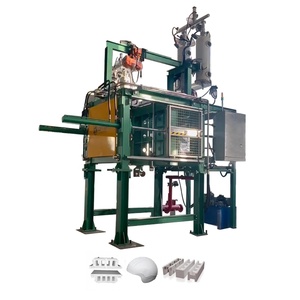






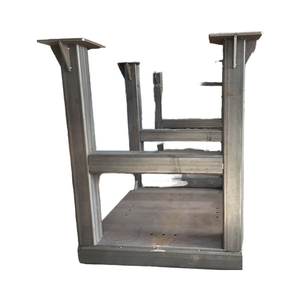





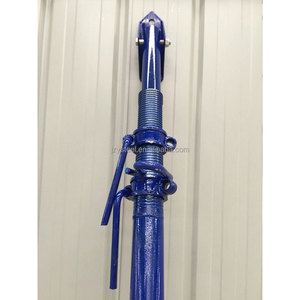


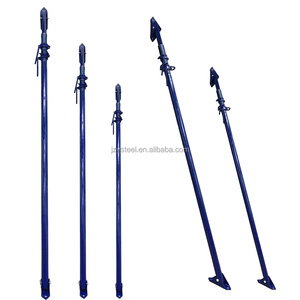

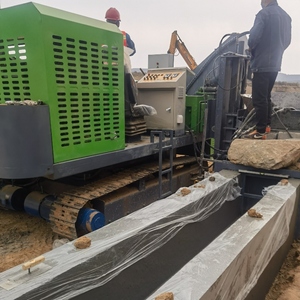

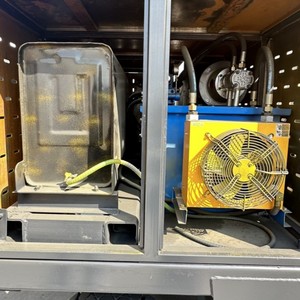
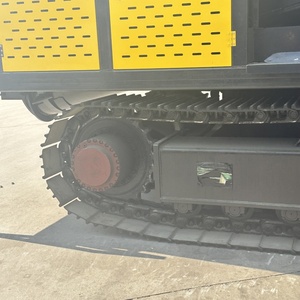

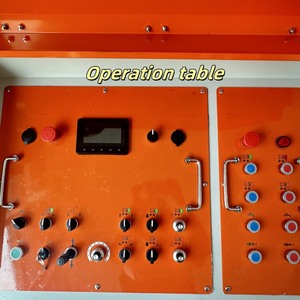

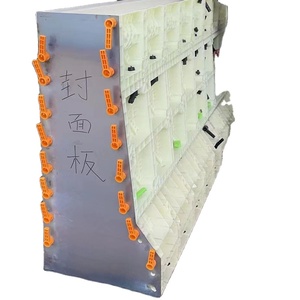

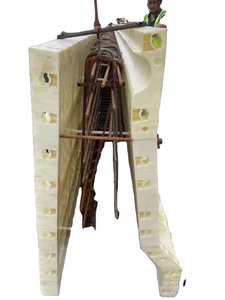




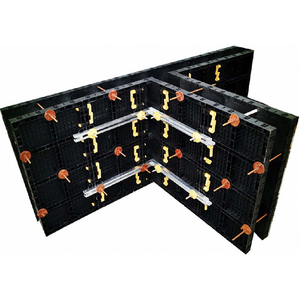






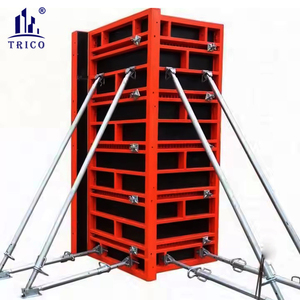

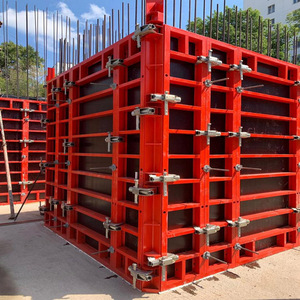
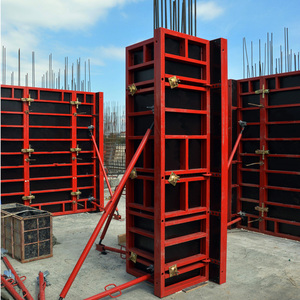
Wall formwork is a temporary structure that supports walls during the construction of a building. It holds wet concrete in place until the concrete sets and hardens into the desired wall shape. Wall formwork is reusable and made of different materials, such as plywood, steel, and aluminum. Here are the types of wall formwork:
Traditional Wall Formwork
Traditional wall formwork consists of vertical and horizontal beams. The beams are also known as formwork props and are supported by a rectangular grid of wooden or metal beams. The grid construction is what holds the concrete walls in place. Traditional wall formwork is popular because it is cost-effective and can be adapted to different wall sizes. However, it requires skilled labor to assemble and disassemble it. It is also time-consuming and not suitable for large-scale construction.
Pneumatic Wall Formwork
Pneumatic wall formwork is an air-pressure-operated system. Air pressure inflates the formwork, creating a cavity where concrete can be poured to form walls. Once the cavity is filled with concrete, the air pressure is released, and the formwork separates from the concrete wall, making it easy to remove. Pneumatic wall formwork is lightweight and requires fewer laborers to operate. It is suitable for large construction projects since it can be adapted to different wall lengths and heights.
Engineered Formwork System
Engineered wall formwork systems are prefabricated units. They consist of metal panels, steel I-beams, and adjustable diagonal braces. The metal panels are connected to steel I-beams to form a strong, rigid structure that can hold heavy concrete. Engineered wall formwork is suitable for large-scale construction projects. It can be customized to fit different wall shapes and sizes, and it is easy to assemble and disassemble. However, it is more expensive than traditional wall formwork.
Timber Formwork
Timber formwork is made from high-quality plywood, timber, or softwood. It is designed to hold wet concrete in place until it sets to form a wall. Timber wall formwork is popular because it is lightweight and easy to handle. It can be adapted to different wall shapes and sizes, and it provides a smooth finish to the concrete wall surface. However, it requires skilled labor to assemble and disassemble.
Single-Use or Reusable Formwork
Single-use formwork is made from cheap materials. It is used for one construction project only, and then it is recycled. Single-use or disposable formwork is popular because it is cheaper and more affordable. It can be adapted to different wall sizes and shapes.
The functions of formwork for walls include providing a mold into which concrete is poured and supporting the weight of the wet concrete until it hardens.
The features of wall formwork include:
Formwork is an essential component in construction projects involving concrete walls. Its applications extend across various industries and project types, including:
Construction of Buildings
Formwork is used to construct concrete walls in residential, commercial, and high-rise buildings. It offers a cost-effective way to build consistent walls and provides insulation and architectural finishes.
Bridges
Bridge construction involves using form walls to create abutments, piers, and girders. The formwork is tailored to accommodate different span lengths, widths, and clearance heights.
Parking Structures
Concrete walls are essential in constructing parking structures. Formwork is crucial for creating ramp walls, column walls, and shear walls in multi-storey and single-storey parking structures.
Tunnels
Wall formwork is also applicable in tunnel construction. It is useful in the construction of tunnel walls, especially in urban areas and metro rail projects where tunnel walls require a rectangular shape and smooth finishes.
Retaining Walls
Formwork is also used to construct retaining walls in concrete. It is a cost-effective way of building cantilever walls, gravity walls, and counterfort walls in different sizes and shapes.
Sound Walls
Formwork is used to construct sound walls along highways, railways, and busy roads. It ensures consistent wall thickness, structural integrity, and finishes.
Basements
Formwork is used to construct foundation walls and basement walls in building structures. It helps create walls of different heights, widths, and thicknesses.
Infrastructure Projects
Wall formwork is used in various infrastructure projects, including water treatment plants, military installations, and schools.
Industrial Facilities
Concrete walls are essential in manufacturing plants, warehouses, power plants, and refineries. Formwork is used to construct structural walls, tank walls, and thick walls of large-diameter concrete structures.
Choosing the right formwork for a project involves considering various factors. Here are some key factors to consider when selecting wall formwork:
Project requirements
The first thing to consider is the type of project, whether it is a residential, commercial, or infrastructure project. The size and complexity of the project should also be considered as well as the design requirements, including the shape, size, and finish of the concrete walls.
Cost
The overall budget should be considered to ensure the formwork chosen is within the budget. Also, consider the initial costs of purchasing or renting the formwork as well as the labor and materials needed for setup and takedown. Life cycle costs include maintenance and repair costs as well as resale or rental potential.
Wall formwork types
It is important to look at the different types of formwork available and choose the one that is suitable for the project. Each type has its advantages and disadvantages; it is important to understand them all before making a selection.
For instance, concrete formwork is the most commonly used, and it involves using concrete as the forming material. It is suitable for a wide range of applications and can be customized to fit different shapes and sizes.
Timber formwork is another type, and as the name suggests, it uses timber materials. It is lightweight and easy to handle but requires skilled labor to construct.
Steel formwork is another popular type, and it uses steel materials. It is durable and reusable but more expensive than timber formwork.
Labor skills
The skills and experience of the labor force should be considered. If the labor force has experience with a specific type of formwork, it should be chosen to reduce the cost of training. Also, the complexity of the formwork system should be considered. Simple systems require less time and effort, while complex systems require skilled labor.
Time
When choosing wall formwork, it is important to consider the construction time. For instance, if the project requires fast construction, then a formwork system that is easy to set up and dismantle should be chosen. Additionally, the availability of formwork can affect the project timeline. It is important to consider the lead time required to procure the formwork.
Safety
Always ensure the safety of the construction crew by choosing wall formwork that complies with safety standards. Also, choose formwork that is stable and easy to operate.
Q1: What is the maximum height of wall formwork?
A1: There is no maximum height for wall formwork. However, as the wall formwork becomes higher, it also becomes more complicated and more expensive. Therefore, it is advisable to use other methods of casting concrete walls, such as jump form, climbing formwork, or crane-lifting formwork, when the walls are over 6 meters high.
Q2: What is the maximum reuse of wall formwork?
A2: The maximum reuse of wall formwork depends on the type of concrete formwork being used. For steel wall formwork, it can be reused up to 300 times, while for plywood wall formwork, it can be reused between 10 to 15 times.
Q3: How should the wall formwork be maintained to ensure durability?
A3: If the formwork is wood, it should be kept dry to prevent rot and should be kept moist to prevent cracking due to overheating. Additionally, the wood formwork should be maintained by applying release oil. For steel formwork, proper cleaning after use goes a long way.